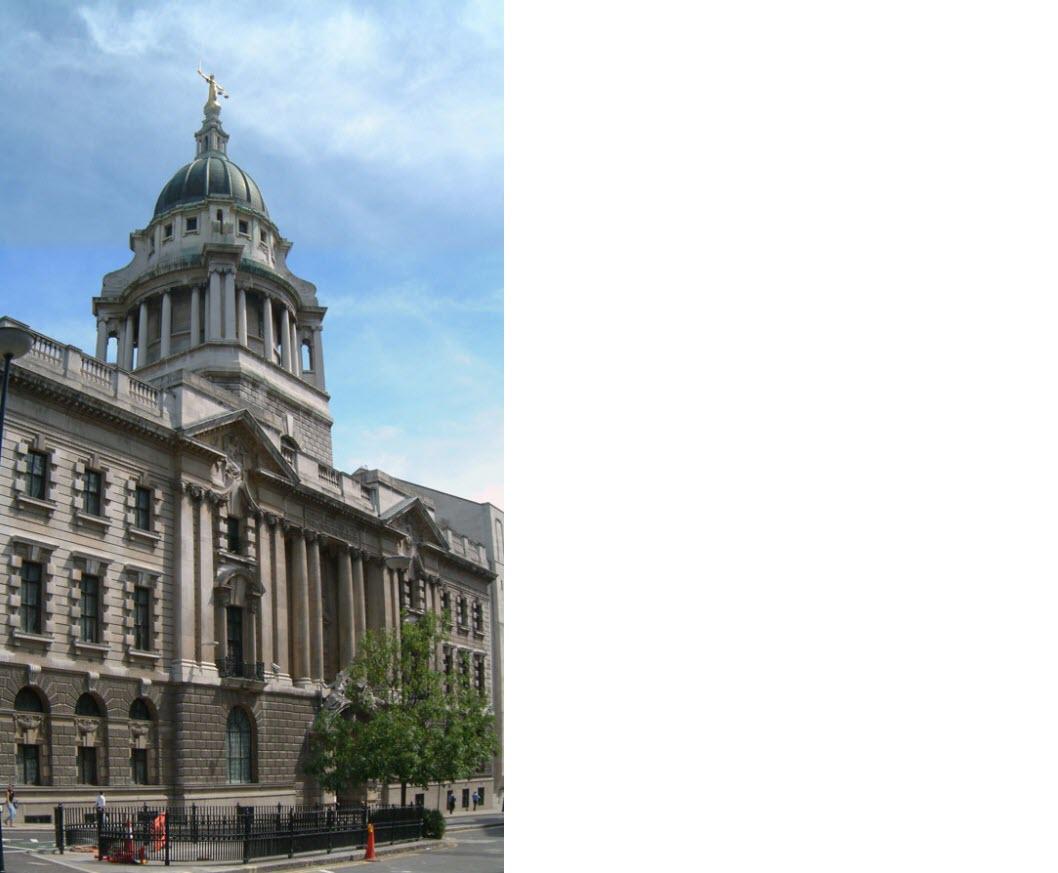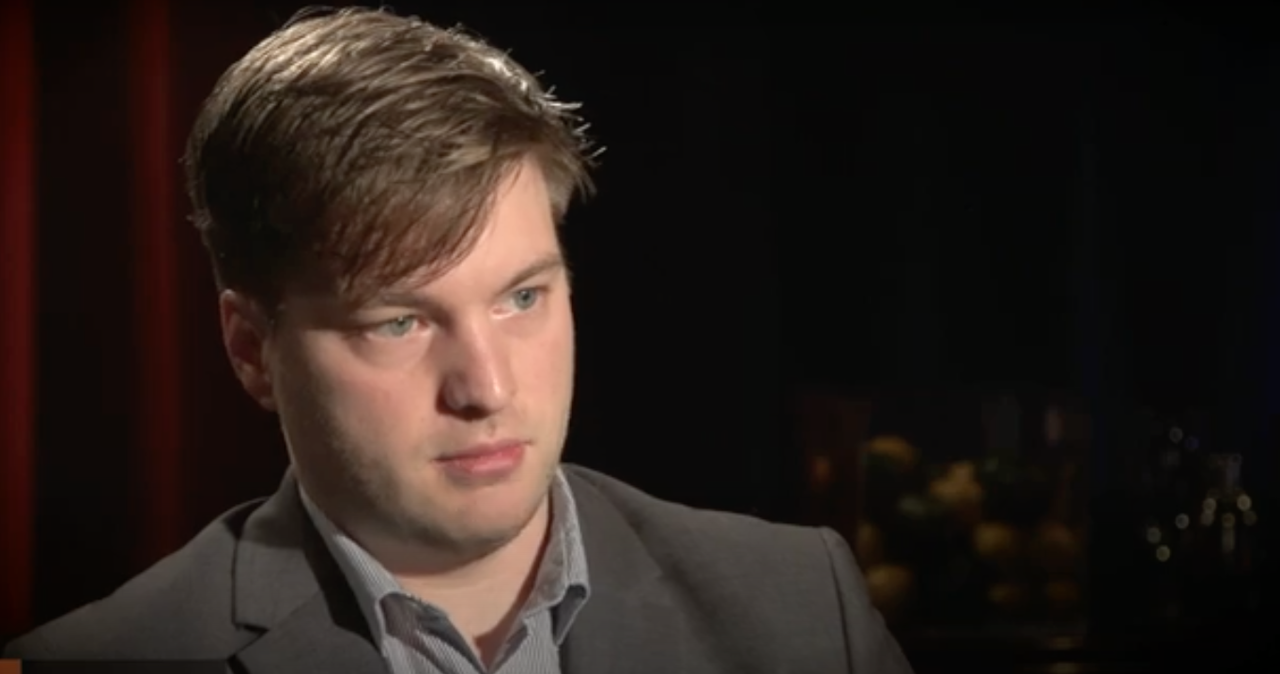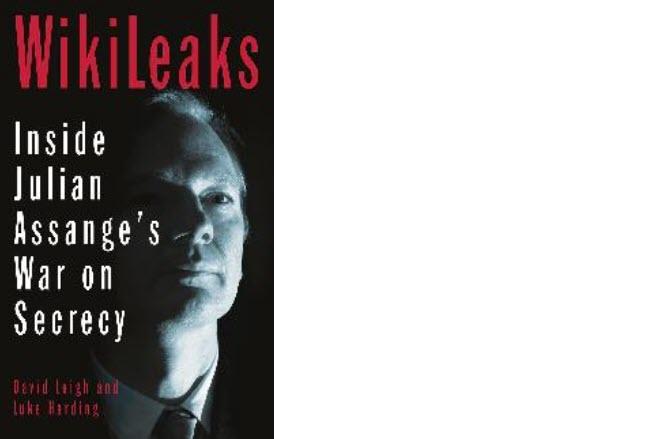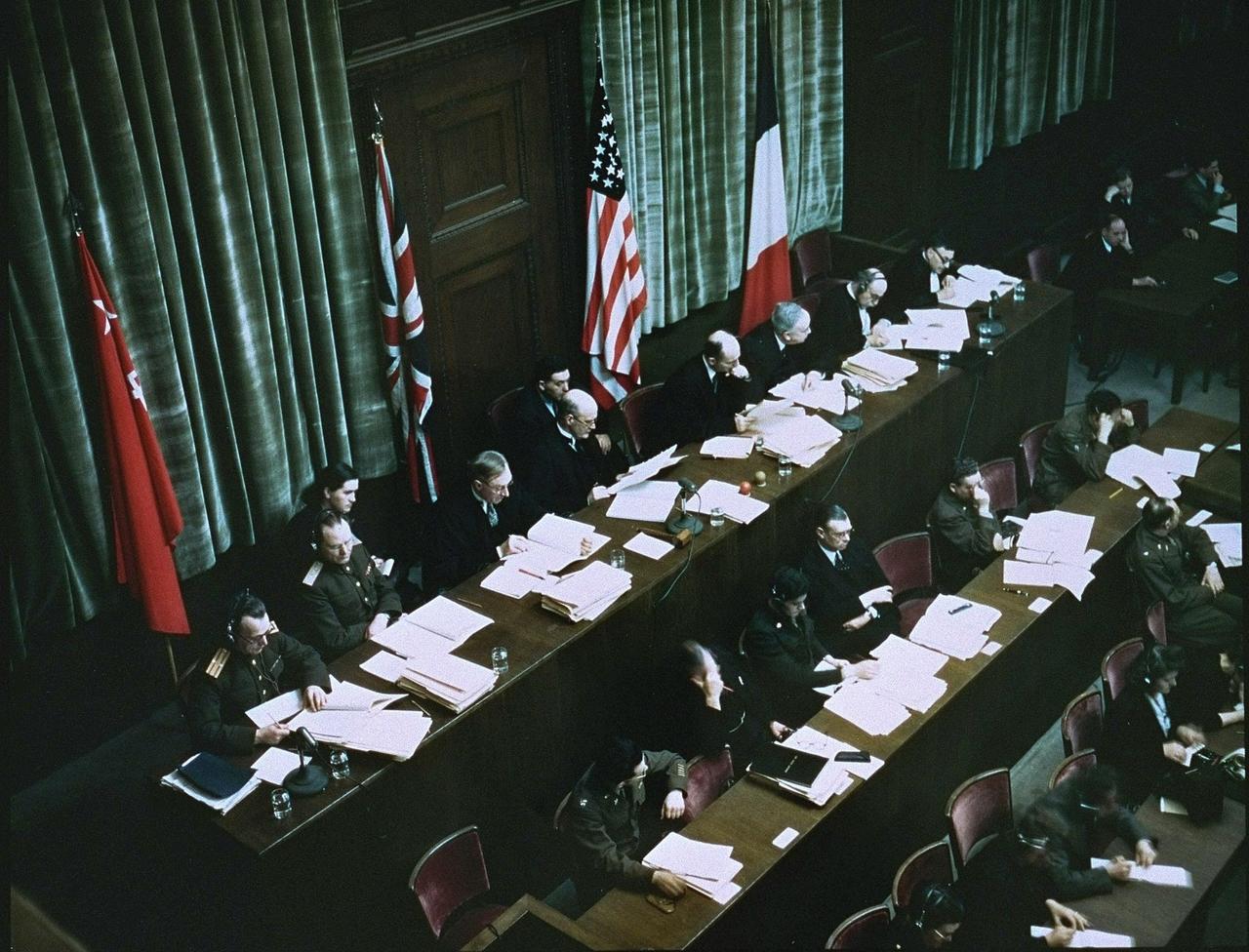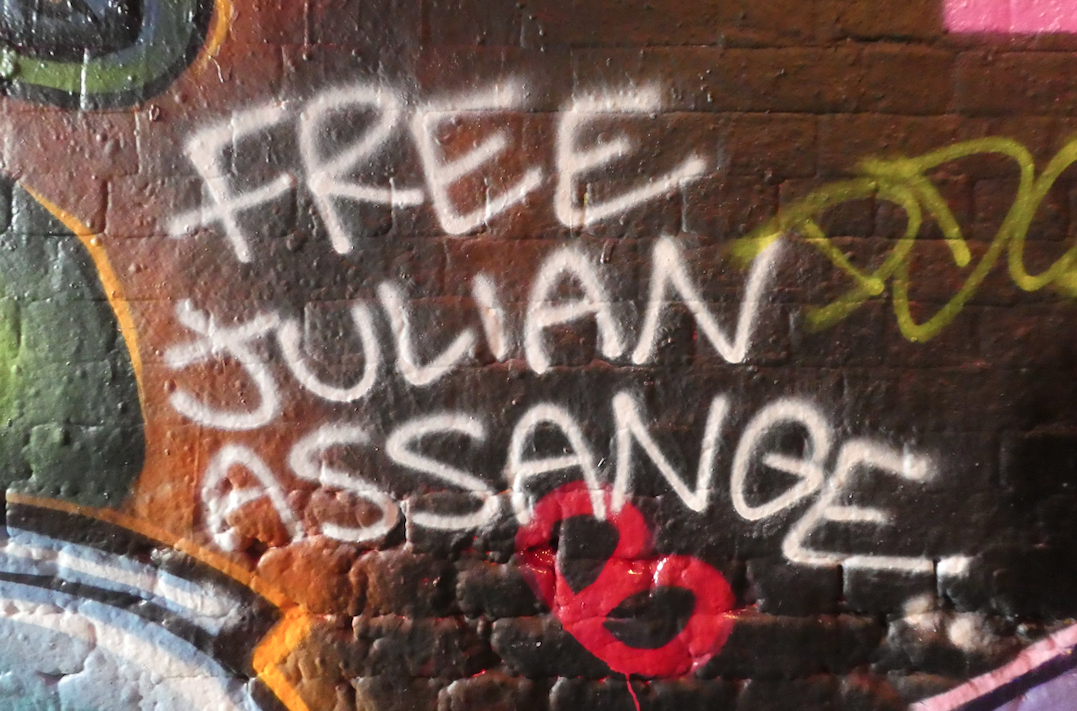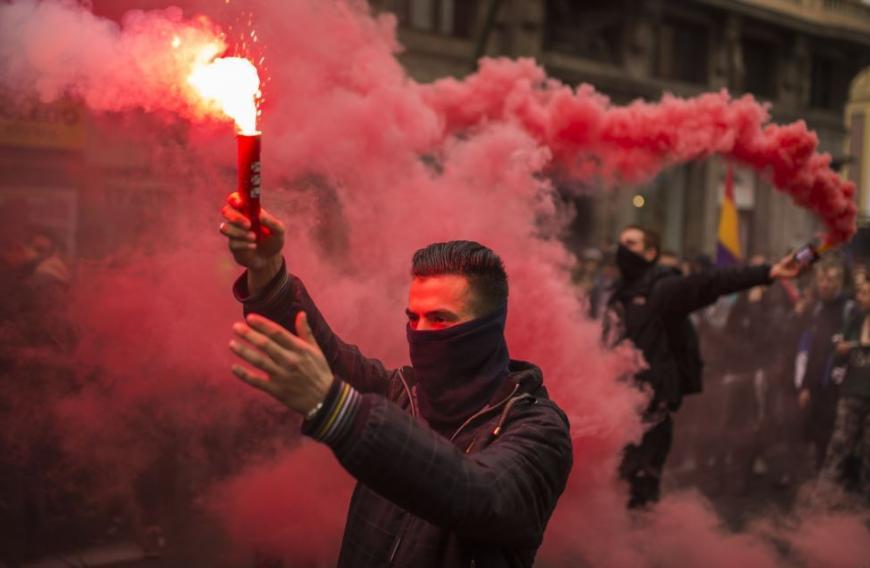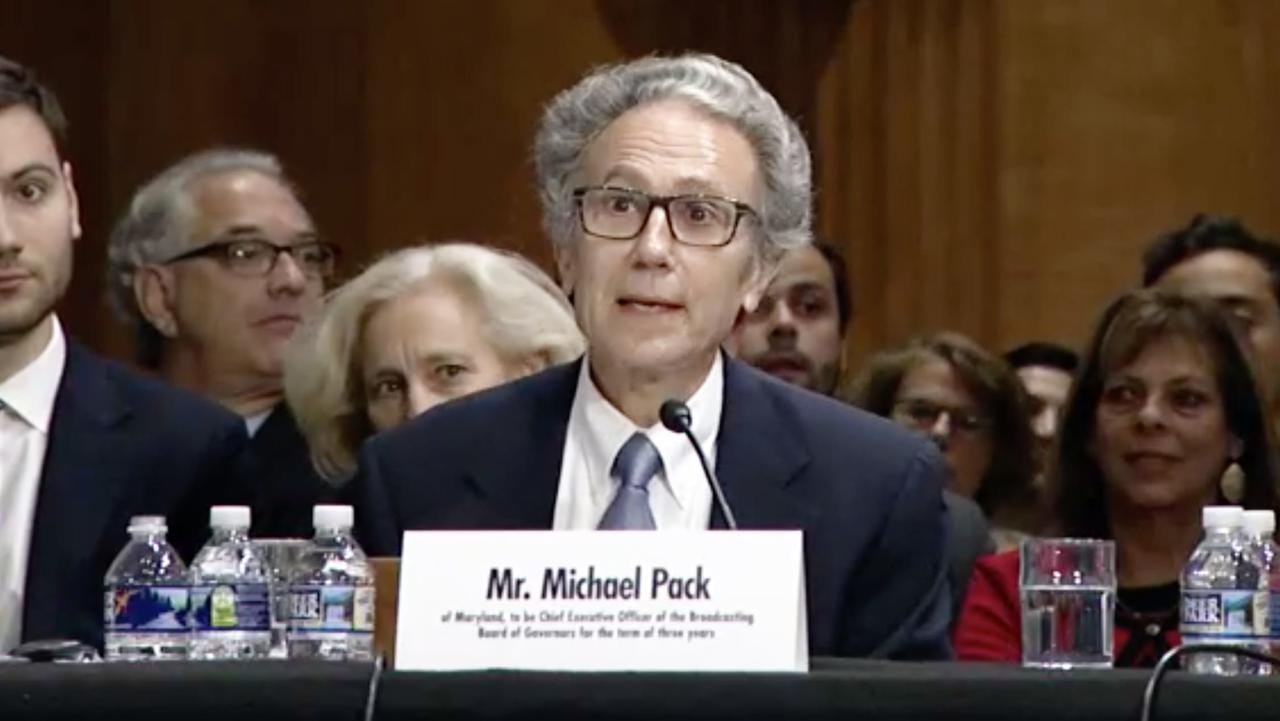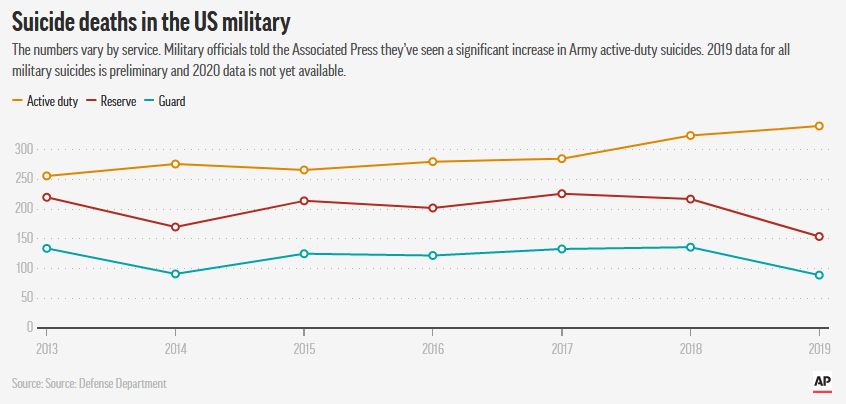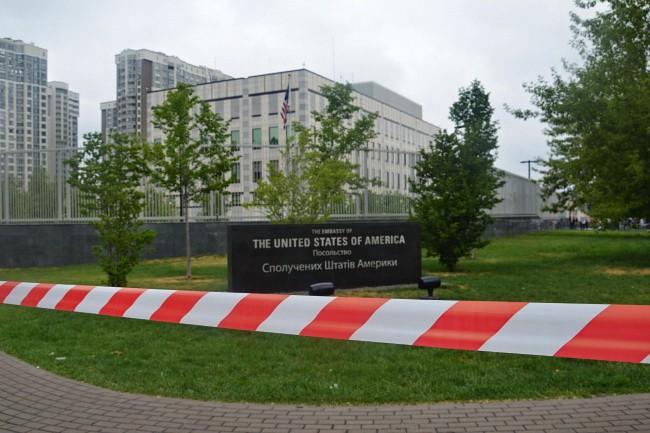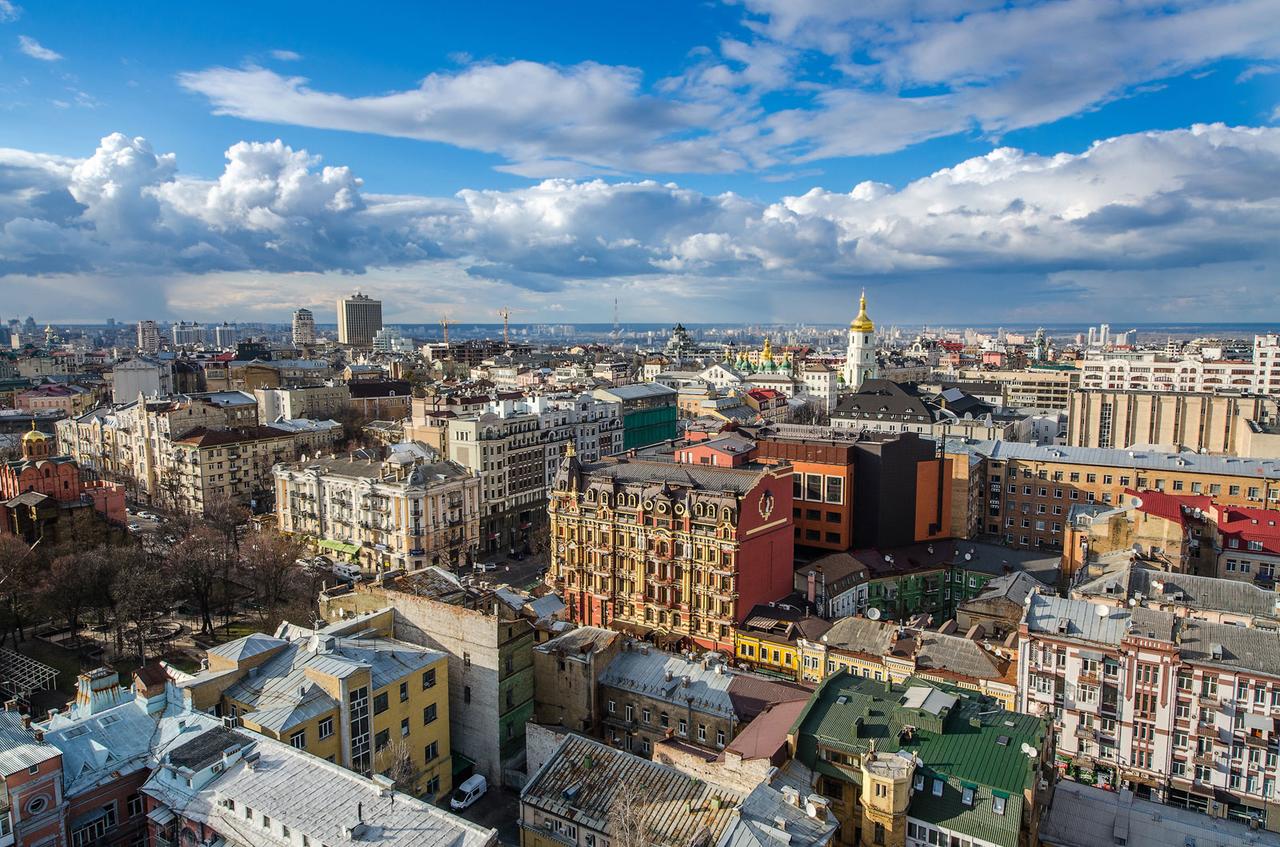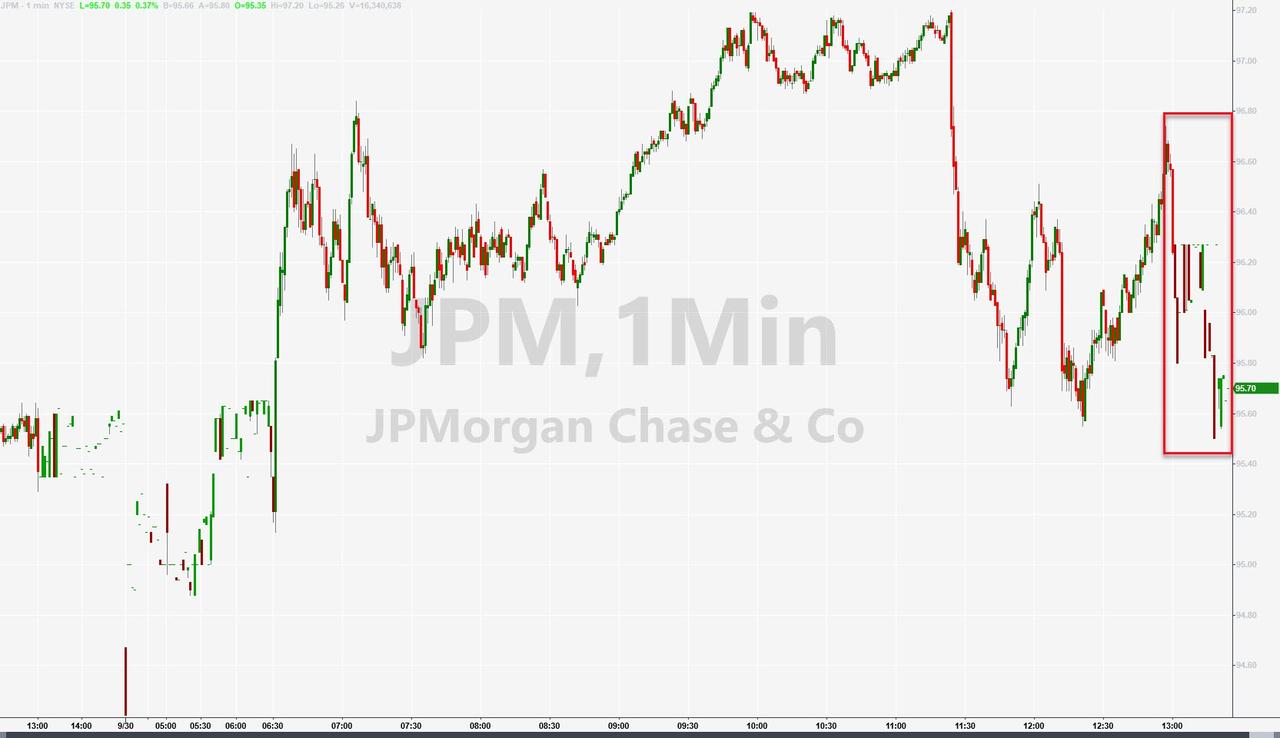The Surreal US Case Against Assange Tyler Durden Thu, 10/01/2020 - 02:00
Authored by Alexander Mercouris via ConsortiumNews.com,
Following the Julian Assange case as it has progressed through its various stages, from the original Swedish allegations right up to and including the extradition hearing which is currently underway in the Central Criminal Court in London, has been a troubling and very strange experience.
The U.S. government has failed to present a coherent case.
Conscious that the British authorities should in theory refuse to extradite Assange if the case against him were shown to be politically motivated and/or related to Assange’s legitimate work as a journalist, the U.S. government has struggled to present a case against Assange which is not too obviously politically motivated or related to Assange’s legitimate work as a journalist.
This explains the strange succession of one original and two superseding indictments.
The U.S. government’s first indictment was based on what was a supposedly simple allegation of computer interference, supposedly coordinated in some sort of conspiracy between Assange and Chelsea Manning.
This was obviously done in an attempt to dispel the idea that the request for Assange’s extradition was politically motivated or was related to Assange’s legitimate work as a journalist.
However lawyers in the United States had no difficulty pointing out the “inchoate facts” of the alleged conspiracy between Assange and Manning, whilst both lawyers and journalists in the United States and elsewhere pointed out that the facts in the indictment in fact bore all the hallmarks of action by a journalist to protect a source.
The result was that the U.S. government replaced its indictment with a first superseding indictment, which this time was founded largely on the 1917 Espionage Act, and was therefore closer to the real reasons why the case against Assange was being brought.
However, that made the case look altogether too obviously politically motivated, so it has in turn been replaced by a second superseding indictment, presented to the court and the defence team virtually on the eve of the trial, which has sought to veer back towards strictly criminal allegations, this time of involvement in computer hacking.
More Problems for Another Indictment
The allegations in the second superseding indictment have however faced major difficulties, in that they do not seem to concern the United States and may not even be actual crimes. Also they rely heavily on the evidence of a known fraudster, whose “evidence” is inherently unreliable.
The U.S. government has failed to make clear whether the additional allegations in the second superseding indictment are intended to constitute a separate standalone case. Initially they appeared to deny that they did; then they hinted that they might do; now however they seem to be acting as if they don’t.
As if that were not confusing enough, the U.S. government and its British lawyers have floated confusing and contradictory theories about whether or not the British authorities can extradite Assange even if the case against him is politically motivated, and even if it is related to his journalistic activities.
Initially they seemed to be arguing that — contrary to all British precedent and the actual text of the extradition treaty between the U.S. and Britain — Britain can in fact extradite Assange to the U.S. on a politically motivated charge, because the enabling Act which the British Parliament passed, which made the extradition treaty between the U.S. and Britain a part of British law, is silent on whether or not individuals can be extradited to the U.S. on a politically motivated charge.
This argument of course came close to conceding that the case against Assange is politically motivated after all.
Central Criminal Court in London, commonly known as Old Bailey, 2004. (Nevilley, Wikimedia Commons)
This threadbare argument, at least for the moment, seems to have been abandoned. At least nothing has been heard of it throughout the current hearing. Instead the U.S. government and its British lawyers have argued, in the face of the incredulity of a string of expert and factual witnesses, that the case is not politically motivated after all.
The same inconsistencies have beset the U.S. government’s arguments as to whether or not Assange is being charged under the Espionage Act for activities related to his work as a journalist.
Initially the U.S. government’s position was that he was not. This was based on some theory — never satisfactorily explained or articulated — that Assange in some way is not a journalist, even though he is charged with doing things that journalists do.
Faced by a barrage of expert witnesses who pointed out that the charges brought against Assange under the Espionage Act do in fact relate to work journalists do, the U.S. government midway through the hearing reversed course.
Now it says that the charges against Assange not only do relate to his work as a journalist, but that they can be brought against any journalist who does the things Assange is being charged with having done. The U.S. government has even argued that The New York Times would have been successfully prosecuted under the Espionage Act for publishing the Pentagon Papers, because that was an action essentially identical to the ones for which Assange is being charged.
The implications for journalists of this astonishing reversal are truly shocking. It is staggering that in the media it has attracted no attention.
Trouble with Witnesses
The U.S. government has shown the same lack of coherence in its response to the defence’s impressive lineup of expert witnesses.
The conventional way of responding to an expert is to call another expert to state a contrary view. On the critical issues of U.S. law, especially the protections provided to journalists by the First Amendment to the Constitution, as well as on the politics in the U.S. behind the Assange prosecution, the U.S. government has however done no such thing. Presumably it has found it difficult or impossible to find experts who can be relied upon credibly to state a contrary view.
Instead, armed only with affidavits from U.S. Justice Department officials, who are of course not impartial experts at all, but who are part of the U.S. government’s legal team, the U.S. government’s British lawyers have been left to argue that the defence’s experts are not really experts at all — an impossible argument to make convincingly in my opinion — and to debate with the experts points of U.S. politics and U.S. law — including difficult points of U.S. constitutional and case law — about which the experts are by definition far more knowledgeable than the British lawyers.
The result, inevitably, has been a series of humiliations, as the lawyers have been repeatedly caught out by the experts making basic errors of fact and interpretation about the points which they have sought to argue.
Unsurprisingly, the lawyers have attempted to make up for this by trying to intimidate and denigrate the experts, in a way that has only highlighted their own lack of expertise in the relevant areas by comparison with that of the experts.
Trevor Timm, a defence witness and press-freedom advocate, in 2014. (YouTube)
Given the collapse into incoherence of the U.S. government’s case, it is unsurprising that the U.S. government’s British lawyers are now reportedly trying to persuade the Judge against hearing closing arguments.
Given the constant shifts and reversals in the U.S. government’s position, preparing and presenting a closing argument to the court which would be internally consistent and credible must be fast becoming a nightmare. If closing arguments do take place, as I still expect, it will be interesting to see which of the many conflicting arguments and theories they have made the U.S. government’s lawyers finally run with.
On its face the U.S. government’s case ought to be close to collapse. There was even a point in the hearing where one of the U.S. government’s British lawyers apparently admitted to the judge that the reason for the second superseding indictment was that the first superseding indictment was “failing.”
If so, then given that the charges being prosecuted against Assange are still basically those set out in the first superseding indictment, the case against Assange ought to be dismissed, and the U.S. government’s request for his extradition ought to be refused.
The Underlying Truth
It remains to be seen whether that is what actually happens. However, that brings me to the single most important fact, and the underlying truth, about this extraordinary case.
It is very easy when following the intricacies of such a complex legal process to lose sight of what this case is really about.
Ultimately the U.S. government is not pursuing Julian Assange because he helped Chelsea Manning take certain steps with a computer to conceal her identity, or because he had some historic contacts with hackers, or because he became involved in some activities in Iceland, which caused him to fall foul of a fraudster (and FBI informant).
Nor is it because Assange received and published classified material. In the U.S. the receipt and publication by the news media of classified material has grown to almost industrial levels.
It is because Assange, to a greater extent than any other journalist since the end of the war in Vietnam, has exposed the darkest and most terrible secrets of the U.S. government.
Outside the court where his son endures what the judge now admits is a political trial, Julian #Assange's father, John Shipton, describes the human carnage caused by America and utters an unforgettable truth: "Julian didn't do anything, they did." https://t.co/O4AbPg4IRU
— John Pilger (@johnpilger) September 26, 2020
The case against Assange has its origin in the calamitous “War on Terror” launched by the Bush administration in the immediate aftermath of the 9/11 attacks.
That “war” provided the cover for a series of violent military aggressions, primarily in the Middle East, by the U.S. and its closest allies, first and foremost Britain but also including other countries such as Saudi Arabia and France.
The result has been a series of wars in a succession of Middle East countries — Afghanistan, Iraq, Libya, Syria and Yemen— fought by the U.S. and its allies and proxies, which have caused the devastation of whole societies, and the death and dispersal of millions.
In the process the U.S. has become drawn increasingly into practices which it once condemned, or at least said it condemned. These include the “extrajudicial killing” (i.e. murder) of people — who have included children and U.S. citizens — by drone strikes, a practice which has now become routine; the kidnapping of individuals and their detention without trial in places like Guantanamo, a practice which despite unconvincing protestations that “extraordinary rendition” no longer happens almost certainly continues; and the practice of torture, at one time referred to as “enhanced interrogation techniques,” which almost certainly still continues, and indeed appears to have become normalized.
All of this activity straightforwardly violates international (and domestic U.S.) law, including war crimes law and human rights law, and does so moreover in fundamental ways.
It also requires, in order to implement the policies that result in these unlawful acts, in the creation of a vast and ultimately unaccountable national security apparatus of a sort that is ultimately incompatible with a democratic society. Inevitably its activities, which have become routinely unlawful, are becoming unlawful within the territory of the United States, as well as outside it.
This manifests itself in all sorts of ways, for example through the vast, indiscriminate and illegal bulk-surveillance program exposed by the whistleblower Edward Snowden, and by the systemic FISA surveillance abuse exposed over the course of the Russiagate “scandal.”
The extent to which the very existence of the national security apparatus, required to implement various U.S. illegal activities and to achieve its foreign policy goals, has become incompatible with a democratic society, is shown by one of the most alarming of recent developments, both in Britain and in the United States.
This is the growing complicity of much of the media in concealing its illegal activities. Obviously without that complicity these activities would be impossible, as would the serial violations of international law, including war crimes law and human rights, which the United States and some of its allies now routinely engage in.
US post-war aggressive history of coups and invasions for geo-strategic & economic interests has been covered up by the establishment media, explained as 'spreading democracy', and Julian Assange, almost single-handedly, lifted that cover. Hence he is in the dock.
— Joe Lauria (@unjoe) September 20, 2020
All this explains the extreme reaction to Julian Assange, and the determined attempts to destroy him, and to pulp his reputation.
Julian Assange and his organization WikiLeaks, have done those things which the U.S. government and its national security apparatus most fear, and have worked hardest to prevent, by exposing the terrible reality of much of what the U.S. government now routinely does, and is determined to conceal, and what much of the media is helping the U.S. government to conceal.
Thus in a series of astonishing revelations Julian Assange and WikiLeaks have exposed in the so-called embassy cables the extraordinarily manipulative conduct of U.S. foreign policy; in the Vault 7 disclosures the instruments the CIA uses in order to — as U.S. Secretary of State Mike Pompeo has said, “lie” and “cheat” — and, most disturbingly, in collaboration with Chelsea Manning, the rampant war crimes and egregious human rights abuses carried out by the U.S. military during the illegal war and occupation of Iraq.
This is an extraordinary record for a journalist, and for an organization, WikiLeaks, which was only set up in 2006.
Not surprisingly, the result has been that the pursuit of Assange by the U.S. government has been relentless, whilst the media, much of which has been complicit in covering up its crimes, has preferred to look the other way.
Hence, the Surreal Quality
It is this underlying reality which gives the whole case currently unfolding in London’s Central Criminal Court its surreal quality.
That the true purpose of the U.S. government’s relentless pursuit of Assange is to prevent him from exposing more of its crimes, and to punish him for exposing those of its crimes which he did expose, if only so as to deter others from doing the same thing, is perfectly obvious to any unbiased and realistic observer. However, the hearing in London is being conducted as if this were not the case.
Thus, the extraordinary zigzags in the U.S. government’s rationale for bringing the case, as it cannot admit the true reason why the case has been actually brought.
Thus, also the U.S. government’s strenuous efforts throughout the hearing to prevent evidence being produced of its crimes which Assange exposed.
The U.S. government has strenuously opposed all attempts to introduce as evidence the appalling “Collateral Murder” video, which shows the deliberate murder of civilians in Iraq by members of the U.S. military. It has also strenuously opposed the introduction of evidence from a defence witness about his own torture. This despite the fact that in both cases the fact of the U.S. crimes is scarcely disputed, and has in fact been all but admitted.
The result is the paradoxical and bizarre situation whereby the U.S. authorities try to cobble together a case against Assange based on a confusing medley of discordant and conflicting claims and facts, whilst failing to prosecute or hold to account those who were responsible for the very serious crimes which he has exposed.
In fact, as the U.S. government’s case has unraveled, the argument has become increasingly confined to the discrete issue of whether — by exposing the U.S. government’s crimes —Assange “irresponsibly” put the safety of various U.S. government informants at risk.
As it happens the evidence is clearly that he did not. Over the course of the hearing the court has heard of Assange’s many and serious attempts to conceal the identities of these informants, and of the reckless and even possibly malicious actions of certain others, who actually exposed them.
The court has also been told of the absence of any evidence that any one of these informants has in fact been harmed by any disclosure by WikiLeaks or Assange. Moreover, an expert witness has argued convincingly that the disclosure by a journalist of the identities of such informants would not under U.S. law be a crime anyway.
In response the U.S. government’s lawyers have relied heavily, not on the evidence of any actual witness, but on passages in a book by two Guardian journalists who are known to be hostile to Assange, and who — by publishing a password — seem to have done more to compromise the identities of the informants than Assange ever did.
Neither of these journalists has been called to give evidence on oath about the contents of their book. Doing so would, of course, have exposed them to cross-examination by the defence about the truth of the book’s contents. Given the weight the U.S. government is apparently placing on the book, I find it astonishing that they were not called.
The surreal quality of the U.S. government’s treatment of this issue is shown by the fact that when an actual witness — the German journalist John Goetz — did in fact come forward and offer to give evidence on oath about a specific allegation in the book — refuting an allegation in the book that Assange supposedly made comments at a dinner, which Goetz attended, that showed a reckless disregard for the safety of the informants — the U.S. government’s lawyers strenuously objected, and were able to get the judge to exclude this evidence.
However, it is the staggering disproportion between the scale of the crimes Assange has exposed, and the crimes of which he is accused — if they are even crimes, and of which he anyway appears to be innocent — which for me stands out.
Assange and WikiLeaks have exposed rampant war crimes and human rights abuses over the course of illegal wars waged by the U.S. government and its allies. The death toll from these wars runs at the very least into the tens of thousands, and more plausibly into the hundreds of thousands or even millions.
By contrast over the course of the entire hearing no evidence whatsoever has been produced that as a result of any of Assange’s actions anyone has come to any actual physical harm.
Yet it is Assange who is in the dock, facing demands for his extradition to the United States, where a 175-year sentence may await him, whilst the persons responsible for the colossal crimes he has exposed, not only walk free, but are amongst those who are trying to jail him.
The point was made forcefully during the hearing by one of the defence’s most powerful witnesses, Daniel Ellsberg.
It was also made forcefully to Consortium News by one of its readers, who has correctly pointed out that the crimes which Assange exposed were clearly defined as war crimes by the Nuremberg Tribunal, whose decisions are universally accepted as forming the bedrock of international war crimes law.
The Nuremberg Tribunal moreover made it clear that there is not only a positive duty to refuse to participate in such crimes, even when ordered to do so, but that no sanctions should ever been imposed for exposing such crimes when they occur.
Judges’ bench at international military tribunal at Nuremberg, 1946. (Wikimedia Commons)
In other words, it is Assange and his sources, first and foremost Chelsea Manning, who are the defenders of international law, including the Nuremberg Principles, and including in the case which is currently underway, whilst it is those who persecute them, including by bringing the current case against Assange, who are international law’s violators.
This is the single most important fact about this case, and it explains everything about it.
Assange and Manning have paid an enormous price for their defence of international law, and for the principles of basic human decency and humanity.
Manning was recently held in long spells of solitary detention, and has had her savings confiscated by the U.S. authorities, for no reason other than that she has refused to testify against Assange.
Assange has been subjected to what various UN agencies have characterized as long periods of arbitrary detention and psychological torture.
He continues to be denied bail, despite his known health problems, and is separated from his family.
He continues to have difficulties consulting privately with his lawyers, and has been exposed to the indignity — qualified in other cases by the European Court for Human Rights as a human rights violation — of being kept inside court rooms confined to a glass box or cage.
John Pilger has described vividly and in great detail, including to Consortium News, the inhuman conditions to which Assange is daily exposed to. That these amount to human rights violations ought not to require discussion or explanation.
International Conventions
That these human rights violations breach a host of international conventions to which Britain is a signatory, including against torture and arbitrary detention, in respect of the right to a fair trial, in respect of the right to privacy and dignity of the person, and of the right to a family life, also ought not to require discussion or explanation.
Recently there has been an outcry in Britain because legislation the British government is proposing, which would allow it to modify unilaterally the terms of the Withdrawal Agreement it agreed last year with the European Union, breaches international law.
Without in any way disputing the importance of this issue, which may have important consequences for peace in Ireland, I find the angry protestations of some British journalists and politicians, that Britain never violates international law, frankly unreal.
If they want examples of Britain violating international law they need look no further than the facts of Assange’s case. They might also benefit from looking at what has been said over the course of the ongoing hearing in the Central Criminal Court.
Despite all the difficulties, there is however no reason to give up hope.
London graffiti, March 2020. (duncan c, Flickr, CC BY-NC 2.0)
The extraordinary zigzags the U.S. government has been forced to make as it tries and fails to put a coherent and convincing case against Julian Assange together, show that the law, for all its many flaws, remains an important defence.
I am aware of the many criticisms which have been made of Vanessa Baraitser, the judge who is hearing Assange’s case. I don’t disagree with any of them.
However, I do get the impression that Baraitser’s patience has been sorely tried by the U.S. government’s repeated and dizzying changes of position. I also get the impression that she was particularly annoyed when the U.S. government, on the virtual eve of the hearing, presented to the court and the defence its second superseding indictment, which in effect made a nonsense of the first.
That may explain why the U.S. government’s British lawyers have largely conducted the case as if the second superseding indictment did not exist, basing their arguments mostly on what the first superseding indictment says, though perhaps unsurprisingly, and to the bafflement of the experts, they are now increasingly making arguments which have no basis in any indictment.
Moreover, and perhaps more importantly, Baraitser has rejected the U.S. government’s various attempts to exclude en masse the evidence of defence witnesses, even if she has imposed a 30-minute guillotine on their examination in chief (direct examination) by defence lawyers.
In summary, and in my opinion, there is still a chance, however small, that Baraitser will decide the case in Assange’s favour.
If she does not do so, then I would have thought, based on what has happened over the course of the hearing, that Assange will have good prospects on appeal.
More encouraging than what has been happening inside the court, where the outcome remains very much in doubt, and where the prospects must be considered problematic to say the least, is what has been happening outside.
My wife, who attended one of the hearings last week, saw placards held up by some of Assange’s supporters outside the court, which called on road users to honk their horns in support of Assange. To her delighted astonishment, despite the media blackout which surrounds the case, and despite the long campaign of character assassination to which Assange has been subjected, an extraordinarily high proportion of road users (more than a quarter) did so.
That reinforces my sense that the tide of opinion, at least in Britain, is shifting. The battle is far from over, and can still be won.
https://ift.tt/2GmJzg4
from ZeroHedge News https://ift.tt/2GmJzg4
via IFTTT

